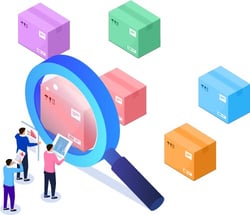 Every product development team wants to create the best product possible. It’s easy to generate and collect great ideas. Still, it’s more challenging to explore the best options, let alone decide on the winning version that will please the customer and be commercially viable. Scoring methods can help sift through a long list of ideas, but how does the product team choose which ones to develop? One strategy that product management teams can use is Set-Based Design (SBD).
Every product development team wants to create the best product possible. It’s easy to generate and collect great ideas. Still, it’s more challenging to explore the best options, let alone decide on the winning version that will please the customer and be commercially viable. Scoring methods can help sift through a long list of ideas, but how does the product team choose which ones to develop? One strategy that product management teams can use is Set-Based Design (SBD).
What Is Set-Based Design?
Set-Based Design or SBD is a product development strategy used in Lean-Agile Practices created by SAFe. The concept encourages product development teams to pursue multiple ideas simultaneously, keeping their ideas open and product scopes flexible for as long as possible. Doing so gives product teams more time to test ideas and find the best possible version before committing to the final product definition.
Agile Product Development
 The agile product method was created in response to the rigidity and limitations of traditional stage-gate methodologies. Software developers were the first to take agile principles and apply them to product development, resulting in a more iterative and collaborative approach.
The agile product method was created in response to the rigidity and limitations of traditional stage-gate methodologies. Software developers were the first to take agile principles and apply them to product development, resulting in a more iterative and collaborative approach.
Manufacturers of physical products are gradually adapting to Agile principles and implementing hybrid approaches for their development teams. This new approach is especially important with cyber-physical products, where the hardware and software teams must coordinate their schedules to align milestones and keep communication channels open.
Set-Based Design & Agile Product Development
SBD product development goes hand in hand with agile product development, as it allows for an even more flexible approach. Product teams can quickly pivot to find the most successful solution by keeping options open and continuously testing ideas.
How Set-Based Design Works
Define the Problem
Product managers start by clearly defining the problem or the project requirements. They’ll identify and list the product's key objectives and its constraints or challenges.
Create Multiple Design Options
Instead of immediately defining the product into a single, narrow solution, SBD guides product teams to generate a set of diverse design options. Creating multiple alternatives encourages creativity, out-of-the-box thinking, and exploration of different concepts. The hope is to identify the best possible option down the line.
Explore Each Design
 Once product teams create a set of designs, they must evaluate each for its strengths, weaknesses, and trade-offs. They will want to consider performance, estimated cost, manufacturability, and other relevant factors.
Once product teams create a set of designs, they must evaluate each for its strengths, weaknesses, and trade-offs. They will want to consider performance, estimated cost, manufacturability, and other relevant factors.
Share Information
Open communication and effective cross-functional collaborations facilitate the best discussions. Promoting open communication and information sharing among product stakeholders helps share valuable insights and findings across the product team.
Refinement and Iteration
Product designers refine the plans based on feedback. From there, product teams can iterate the process and generate new alternatives or modify existing ones.
Gradual Convergence
Regular opportunities are necessary to evaluate the set of designs and eliminate the weakest options. Over time, some design alternatives will become less feasible or effective, gradually converging into a smaller set of highly promising options. Narrowing down your choices using your preferred scoring method is easier when you have the right tools to help you.
Make Informed Decisions
 With set-based design, it’s easier to make informed decisions due to the rigorous testing, iterating, and research involved at each step of the process. This allows product management teams to eliminate options once they’ve received sufficient information. Rejecting an idea too early in the process could result in missing out on a valuable idea.
With set-based design, it’s easier to make informed decisions due to the rigorous testing, iterating, and research involved at each step of the process. This allows product management teams to eliminate options once they’ve received sufficient information. Rejecting an idea too early in the process could result in missing out on a valuable idea.
The best solution doesn’t always check every box on the wish list. Some decisions require an economic trade-off. Here are some of the value items that product managers need to weigh and consider when eliminating options:
- Development expense (cost of labor and materials)
- Lead time (time needed to implement idea)
- Product cost (manufacturing)
- Value (economic worth to business and customer)
- Risk (uncertainty of success)
Implementation
Once you’ve reached the final decision point, your product teams can proceed with the implementation phase.
Why Use Set-Based Design?
 One major benefit of SBD is its ability to reduce risk. By keeping multiple options open, teams can test different ideas simultaneously and eliminate those that are not viable throughout the development process. This saves time and resources that may have been spent developing a single idea that ultimately proved unsuccessful.
One major benefit of SBD is its ability to reduce risk. By keeping multiple options open, teams can test different ideas simultaneously and eliminate those that are not viable throughout the development process. This saves time and resources that may have been spent developing a single idea that ultimately proved unsuccessful.
When to Use Set-Based Design
Using SBD can be cost-efficient when the right conditions are in play. For example, a product requiring a high degree of technological innovation often brings a high investment risk. Testing and modeling several design options to find the best solution can reduce the risk of investing in something new. When marketing or customer conditions are variable, keeping several solutions open until further into the process increases the odds of meeting the consumer's needs with the final design.
Having a fixed deadline can also be a good match for SBD. Because this method explores multiple possibilities from the beginning, researching their benefits, testing, and improving to find the right solution can save a lot of time for the development teams. Once the product management team makes the final decision, the product steps that follow encounter fewer delays due to uncertainty.
Tips for Success with Set-Based Design
Here are some general tips to remember when implementing set-based design:
- SBD works best when you increase the flexibility of your final design and interfaces.
- Keep your options open, then leverage modeling, simulation, and prototyping to gain clear insight into the least valuable choices.
- Schedule reviews to collapse your design options. You’ll help your product teams gradually narrow their focus to the best solution.
- Take a systems view and look beyond your current initiative. The best solution for the current product can also improve other products in the portfolio.
Conclusion: When Used Efficiently, Set-Based Design Can Lead to Better Products
Using SBD Design can lead to the creation of better products for your company when your teams implement the process with efficiency. Spending too many resources on models and testing can impact the financial success of a product, while failing to eliminate weaker options at regular integration points can also undermine the efficiency of the process and obscure the best solution.
The best way to implement SBD Design is to have a set process to follow, excellent communication between teams, and transparency throughout the process.
Gocious is an innovative, easy-to-use product roadmap management software that helps your teams collect ideas, prioritize capabilities, keep communication transparent, and manage your entire portfolio. Book your free demo to see how Gocious PRM software can support your teams.


